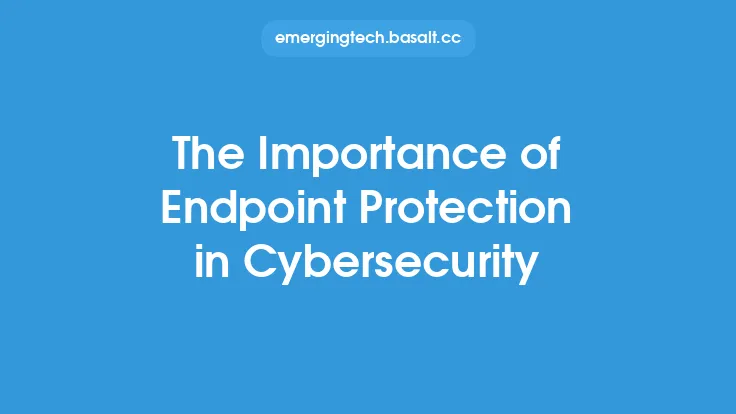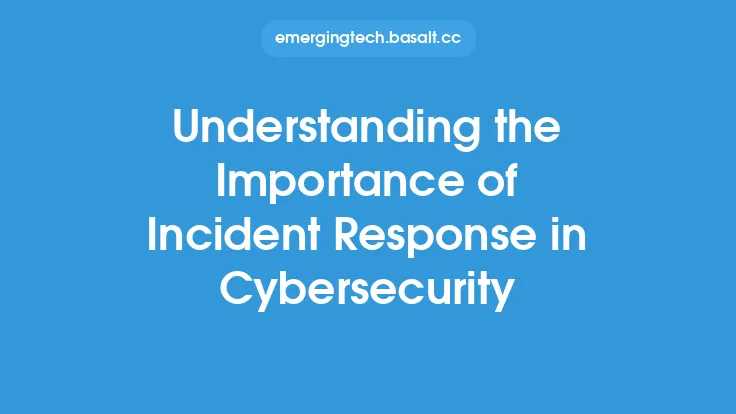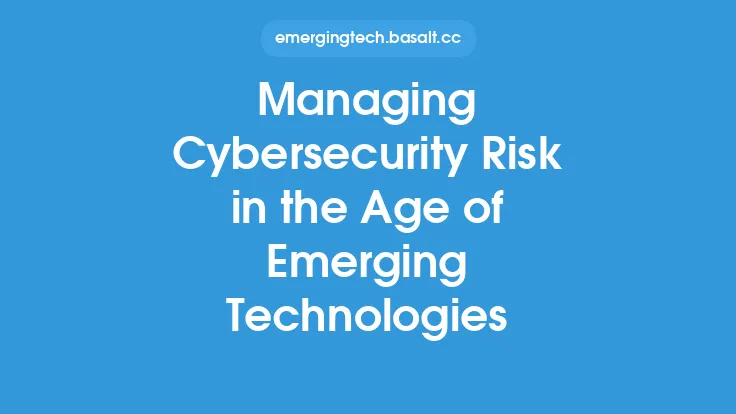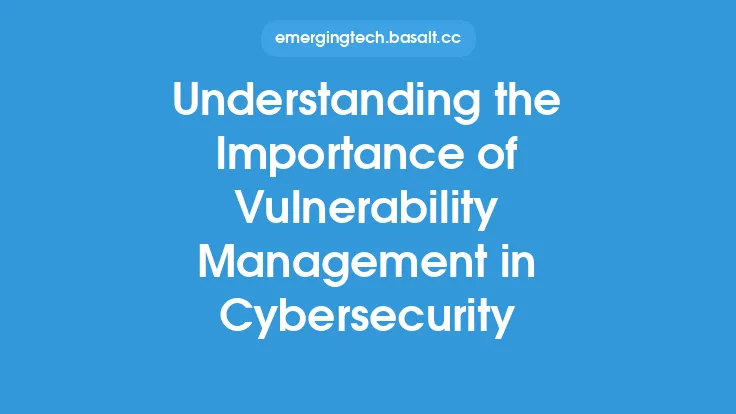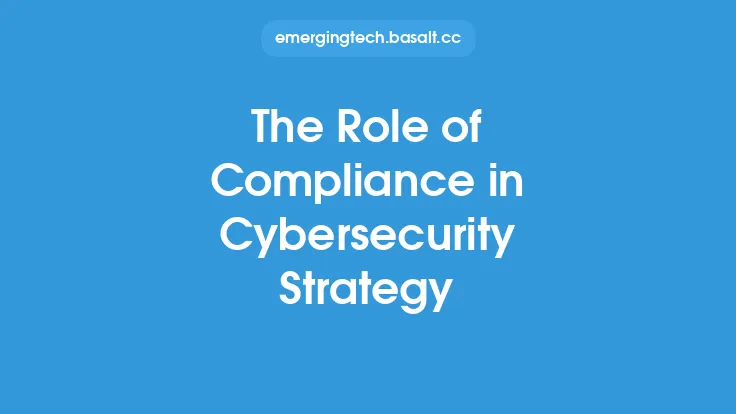In today's digital landscape, cybersecurity is a critical concern for organizations of all sizes and industries. As technology advances and the threat landscape evolves, the importance of risk assessment in cybersecurity cannot be overstated. Risk assessment is a systematic process used to identify, evaluate, and prioritize potential cybersecurity risks, allowing organizations to take proactive measures to mitigate or manage them. This process is essential for ensuring the confidentiality, integrity, and availability of sensitive data and systems.
Introduction to Risk Assessment
Risk assessment is a fundamental component of a comprehensive cybersecurity strategy. It involves a thorough analysis of an organization's assets, vulnerabilities, and threats to determine the likelihood and potential impact of a cybersecurity breach. The goal of risk assessment is to provide a clear understanding of the organization's risk posture, enabling informed decision-making and resource allocation. By identifying and prioritizing potential risks, organizations can focus their efforts on the most critical areas, ensuring the effective use of resources and minimizing the risk of a breach.
Types of Risk Assessments
There are several types of risk assessments that organizations can conduct, each with its own unique focus and methodology. These include:
- Quantitative risk assessments: These assessments use numerical data and statistical models to estimate the likelihood and potential impact of a cybersecurity breach. Quantitative risk assessments are often used to evaluate the financial impact of a breach and to prioritize risk mitigation efforts.
- Qualitative risk assessments: These assessments use non-numerical data and expert judgment to evaluate the likelihood and potential impact of a cybersecurity breach. Qualitative risk assessments are often used to identify and prioritize risks that are difficult to quantify, such as reputational damage or compliance risks.
- Vulnerability assessments: These assessments focus on identifying and evaluating vulnerabilities in an organization's systems and networks. Vulnerability assessments are often used to identify potential entry points for attackers and to prioritize patching and remediation efforts.
- Penetration testing: These assessments involve simulated attacks on an organization's systems and networks to test their defenses and identify vulnerabilities. Penetration testing is often used to evaluate the effectiveness of an organization's security controls and to identify areas for improvement.
Risk Assessment Methodologies
There are several risk assessment methodologies that organizations can use, each with its own strengths and weaknesses. These include:
- NIST Risk Management Framework: This framework provides a structured approach to risk assessment and management, emphasizing the importance of continuous monitoring and risk mitigation.
- ISO 27001: This international standard provides a framework for risk assessment and management, emphasizing the importance of identifying and mitigating risks to an organization's information assets.
- COBIT: This framework provides a comprehensive approach to risk assessment and management, emphasizing the importance of aligning IT risk management with business objectives.
Benefits of Risk Assessment
The benefits of risk assessment in cybersecurity are numerous and well-documented. These include:
- Improved risk management: Risk assessment enables organizations to identify and prioritize potential risks, allowing for more effective risk mitigation and management.
- Enhanced security posture: By identifying and addressing vulnerabilities and weaknesses, organizations can improve their overall security posture and reduce the risk of a breach.
- Compliance and regulatory adherence: Risk assessment can help organizations demonstrate compliance with relevant laws and regulations, reducing the risk of fines and penalties.
- Cost savings: By identifying and mitigating potential risks, organizations can avoid the costly consequences of a breach, including reputational damage, legal fees, and remediation costs.
Challenges and Limitations
While risk assessment is a critical component of cybersecurity, there are several challenges and limitations that organizations may face. These include:
- Resource constraints: Conducting a comprehensive risk assessment can be resource-intensive, requiring significant time, effort, and expertise.
- Complexity: Modern IT environments are often complex and dynamic, making it challenging to identify and evaluate all potential risks.
- Evolving threat landscape: The threat landscape is constantly evolving, with new threats and vulnerabilities emerging daily. This can make it challenging for organizations to stay ahead of potential risks and threats.
Best Practices for Risk Assessment
To ensure the effectiveness of risk assessment in cybersecurity, organizations should follow several best practices. These include:
- Conduct regular risk assessments: Risk assessments should be conducted regularly to ensure that the organization's risk posture is up-to-date and accurate.
- Use a structured methodology: Organizations should use a structured risk assessment methodology to ensure that all potential risks are identified and evaluated.
- Involve stakeholders: Risk assessment should involve stakeholders from across the organization, including IT, security, and business teams.
- Prioritize risks: Organizations should prioritize risks based on their likelihood and potential impact, focusing on the most critical areas first.
Conclusion
In conclusion, risk assessment is a critical component of cybersecurity, enabling organizations to identify, evaluate, and prioritize potential risks. By conducting regular risk assessments and using a structured methodology, organizations can improve their risk management, enhance their security posture, and demonstrate compliance with relevant laws and regulations. While there are challenges and limitations to risk assessment, the benefits far outweigh the costs, making it an essential investment for any organization seeking to protect its sensitive data and systems.

